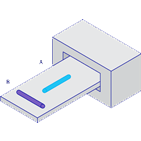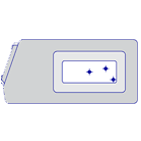-
07 AUG 18
The Importance of Sensitivity in Metal Detection
Sensitivity has a big impact on the performance of your metal detector. There are a number of factors that affect sensitivity and it’s important to understand the differences to help you get the most out of your metal detection program.
What is sensitivity in metal detection?
Sensitivity is the metal detector’s ability to detect a specific type and size of metal contaminant. Metal detector sensitivity performance is usually expressed in terms of the diameter of a test sphere made from a specific type of metal, such as ferrous, non-ferrous, aluminum or stainless steel. The higher the sensitivity of your metal detector, the smaller the pieces of metal that can be detected.
Why is sensitivity important?
We regularly refer to the diameter of a ball size when discussing sensitivity. For example, a highly sensitive detector could detect a 0.6mm ferrous ball. The effect of the ball size is small but we know that real life metal contaminants are much larger. Therefore, small changes in detecting ball size can make big changes to the size of metal contaminants that can be found. This is due to the orientation effect of the metal. We discuss orientation effect later in this post but you can also read more about it in a recent blog post here.
What factors affect sensitivity?
To protect consumers, maximize efficiency and meet industry standards, producers have an important role to play in identifying, implementing and maintaining an optimum level of detection sensitivity. Higher detection sensitivity means less risk of contaminants. It is a clear ideal, but one that is complicated by a range of limiting factors.
Metal type – Industry standards state that metal detectors must be able to detect all types of metal including, ferrous, non-ferrous and stainless steel. However, the sensitivity of the metal detector can vary depending on the type of metal contaminant present.
Orientation effect – Different types of metal are easier to detect in one orientation compared to others, this is why sensitivity is measured in balls rather than wire length. Orientation effect occurs when the diameter of the wire is less than the spherical sensitivity. We measure sensitivity in ball size (or spherical sensitivity) because some metal contaminants, which are most often wire, are more difficult to detect depending on the direction of travel through the metal detector. Any improvement in spherical sensitivity can dramatically improve wire detection capability. Aperture size and position – The closer the product is to the edge of the metal detector, the higher the sensitivity. The larger the aperture, the less sensitive the metal detector. In order to get a consistent reading, products should pass directly through the center of the metal detector aperture.
Aperture size and position – The closer the product is to the edge of the metal detector, the higher the sensitivity. The larger the aperture, the less sensitive the metal detector. In order to get a consistent reading, products should pass directly through the center of the metal detector aperture.
 Packaging material – Packaging that contains metal such as foil or metalized film undoubtedly affects sensitivity. The metal in the packaging will affect the metal detector, reducing sensitivity and possibly creating a false metal signal.
Packaging material – Packaging that contains metal such as foil or metalized film undoubtedly affects sensitivity. The metal in the packaging will affect the metal detector, reducing sensitivity and possibly creating a false metal signal.
Environmental conditions – Plant vibrations and temperature fluctuations can also affect the metal detector’s sensitivity. The affects are more acute when operating at a higher frequency, which can result in reduced performance and increased false triggering.
Product characteristics – Some products have certain characteristics that behave in the same way as metal. For example, products with high moisture and salt content can often create a ‘false’ metal signal, making it difficult to distinguish the difference between metal and product.
Process speed – This is not necessarily a limiting factor for conveyorized metal detectors where product passes through at a consistent speed. However, performance is hindered when inspecting product passing through vertical metal detection systems and pipelines, due to variations in the speed and flow of the product.
Detector frequency – Metal detectors operate at different electromagnetic frequencies depending on the type of product being inspected. For dry products such as snack foods, metal detectors are more effective at high frequencies, but for wet products such as meat and poultry, a lower frequency is the better option.
METTLER TOLEDO metal detectors have multiple frequencies that can be switched for the most appropriate product.
How to achieve optimum operating sensitivity
METTLER TOLEDO metal detectors have a range of different technologies to suit the product being inspected. For example, the optimum technology for inspecting dry products such as snack foods is our Profile metal detector with ultra high-tuned frequency to deliver exceptional sensitivity to detect more and smaller pieces of metal.
In challenging applications where products are hot, wet, chilled or cooling, our Profile Advantage metal detector with multi-simultaneous frequency and product signal suppression technology is far more effective. These challenging applications often have a ‘product effect‘, which cause a false ‘metal’ signal in the metal detector. By running the metal detector at two frequencies at the same time, you can effectively detect far smaller metal contaminants whilst virtually eliminating false rejects.
Choosing a stable, reliable metal detector that delivers enhanced sensitivity levels is an integral part of your food safety program to minimize metal contamination.
Take a look at this short video which explains the importance of sensivitiy in metal detection
Find out more about our metal detection portfolio at .
To receive notifications when a new blog is posted, SUBSCRIBE TO OUR BLOG
Leave a reply →
